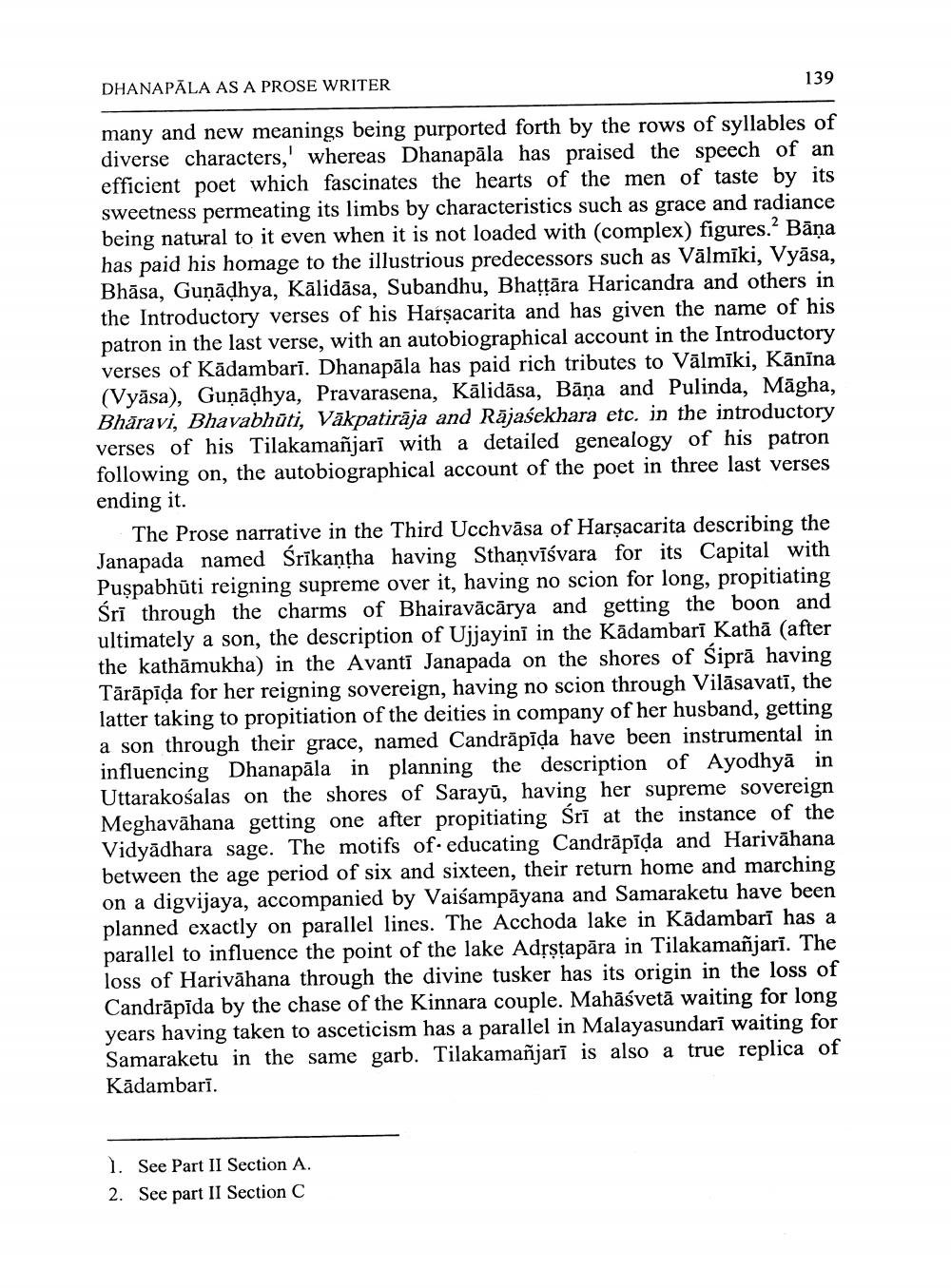________________
DHANAPĀLA AS A PROSE WRITER
139
many and new meanings being purported forth by the rows of syllables of diverse characters, whereas Dhanapāla has praised the speech of an efficient poet which fascinates the hearts of the men of taste by its sweetness permeating its limbs by characteristics such as grace and radiance being natural to it even when it is not loaded with complex) figures. Bāņa has paid his homage to the illustrious predecessors such as Vālmīki, Vyāsa, Bhāsa, Gunādhya, Kālidāsa, Subandhu, Bhattāra Haricandra and others in the Introductory verses of his Harsacarita and has given the name of his patron in the last verse, with an autobiographical account in the Introductory verses of Kādambarī. Dhanapāla has paid rich tributes to Vālmīki, Kānīna (Vyāsa), Guņādhya, Pravarasena, Kālidāsa, Bāņa and Pulinda, Māgha, Bhāravi, Bhavabhūti, Vākpatirāja and Rājasekhara etc. in the introductory verses of his Tilakamañjarī with a detailed genealogy of his patron following on, the autobiographical account of the poet in three last verses ending it.
The Prose narrative in the Third Ucchvāsa of Harşacarita describing the Janapada named Śrīkantha having Sthanvīśvara for its Capital with Puspabhūti reigning supreme over it, having no scion for long, propitiating Śrī through the charms of Bhairavācārya and getting the boon and ultimately a son, the description of Ujjayinī in the Kādambarī Kathā (after the kathāmukha) in the Avanti Janapada on the shores of Siprā having Tārāpīda for her reigning sovereign, having no scion through Vilāsavatī, the latter taking to propitiation of the deities in company of her husband, getting a son through their grace, named Candrāpīda have been instrumental in influencing Dhanapāla in planning the description of Ayodhyā in Uttarakośalas on the shores of Sarayū, having her supreme sovereign Meghavāhana getting one after propitiating Śrī at the instance of the Vidyādhara sage. The motifs of educating Candrāpīda and Harivāhana between the age period of six and sixteen, their return home and marching on a digvijaya, accompanied by Vaišampāyana and Samaraketu have been planned exactly on parallel lines. The Acchoda lake in Kādambarī has a parallel to influence the point of the lake Adrstapāra in Tilakamañjari. The loss of Harivāhana through the divine tusker has its origin in the loss of Candrāpīda by the chase of the Kinnara couple. Mahāśvetā waiting for long years having taken to asceticism has a parallel in Malayasundari waiting for Samaraketu in the same garb. Tilakamañjarī is also a true replica of Kādambari.
1. See Part II Section A. 2. See part II Section C




